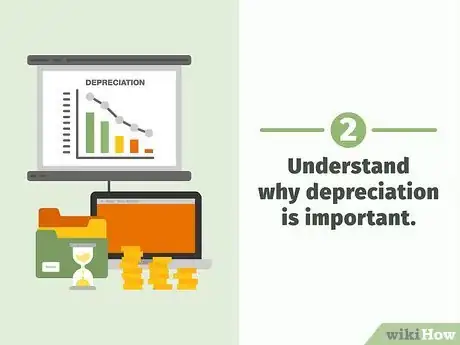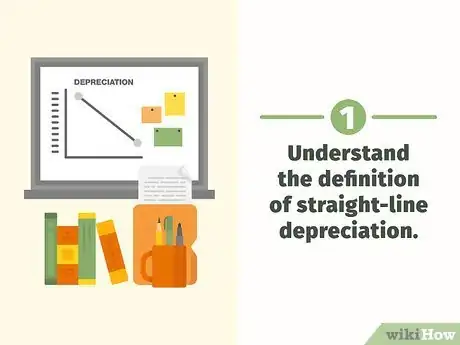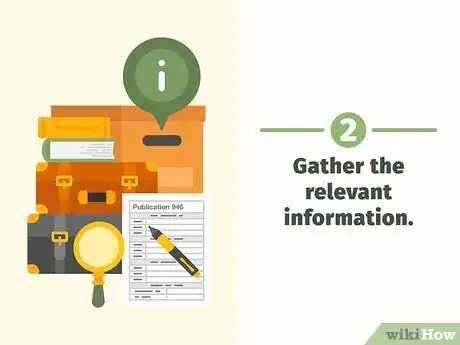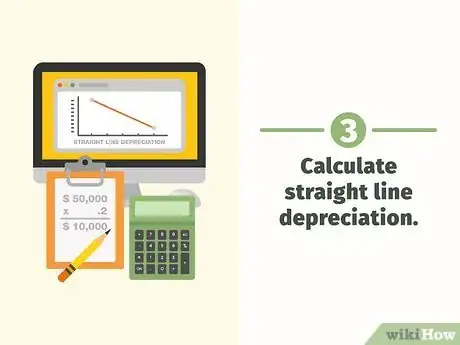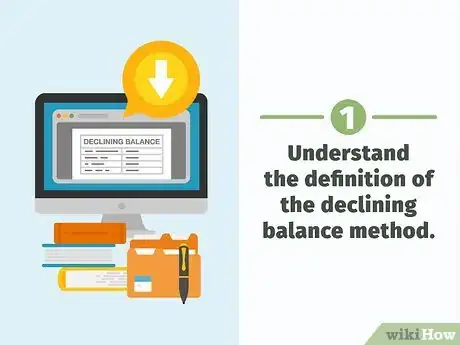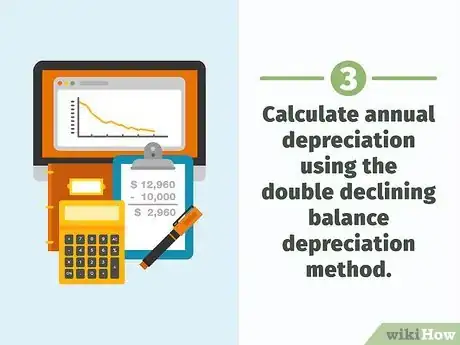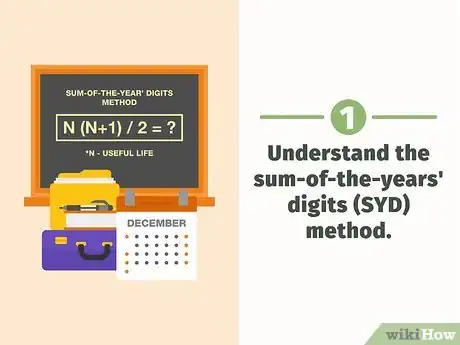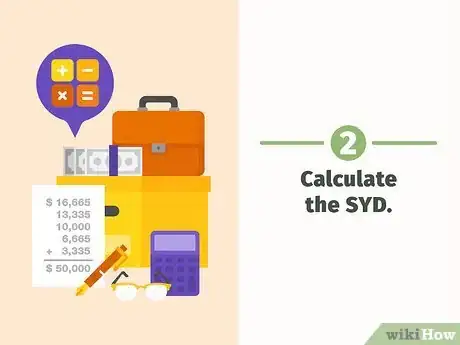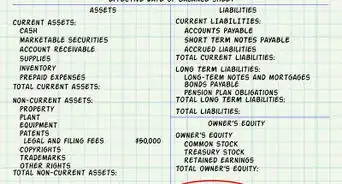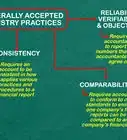This article was co-authored by Michael R. Lewis. Michael R. Lewis is a retired corporate executive, entrepreneur, and investment advisor in Texas. He has over 40 years of experience in business and finance, including as a Vice President for Blue Cross Blue Shield of Texas. He has a BBA in Industrial Management from the University of Texas at Austin.
There are 9 references cited in this article, which can be found at the bottom of the page.
wikiHow marks an article as reader-approved once it receives enough positive feedback. In this case, 100% of readers who voted found the article helpful, earning it our reader-approved status.
This article has been viewed 178,091 times.
Depreciation is a method accountants use to spread the cost of capital equipment over the useful life of the equipment. Recording depreciation on financial statements is governed by Generally Accepted Accounting Practices (GAAP). Accountants must follow these regulations when recording depreciation. Companies can choose from several different methods of recording depreciation. Methods based on time include straight-line, declining balance and sum-of-the-years' digits depreciation.[1] From time to time, Congress amends IRS rules about depreciation to encourage investment in capital equipment. For example, Section 179 and Bonus Depreciation is a tax code that allows businesses to deduct the full purchase price of capital equipment, up to $500,000, in the current year.[2]
Steps
Calculating the Useful Life of Equipment
-
1Understand the meaning of useful life. Any piece of equipment that is expected to last more than one year is considered, in accounting terms, a fixed asset. Accountants need to know the expected useful life, or how long the equipment is expected to last before needing to be replaced, and its estimated salvage value, in order to accurately calculate depreciation on financial statements. The types of fixed assets purchased vary from company to company. Examples include furniture, office equipment, medical equipment and vehicles.[3]
-
2Understand why depreciation is important. Businesses need to match their expenses to their annual revenue. If they recorded the full cost of a fixed asset in the year it was purchased, the profit and loss statement for that period would be inaccurate. It is more accurate to spread the cost of that equipment over the period of time during which the business will use it.[4]
- For example, suppose a company purchases a $75,000 vehicle that will be used for five years. The company should not record the whole cost of that vehicle in year in which it was purchased. Since it will use the vehicle for its entire useful life, it is more accurate to spread the cost of the vehicle over a five year period on financial statements.
Advertisement -
3Determine the useful life of equipment. The IRS has published a table that lists the anticipated useful life of different categories of fixed assets. This way companies are consistent in the way they are calculating depreciation for different fixed assets. This table is known as Publication 946.[5]
- In this publication, the IRS refers to useful life as the recovery period of a fixed asset.
- Vehicles such as cars, taxis, buses and trucks, for example, have a five-year recovery period. Although a business may own a vehicle for more than five years, the IRS thinks it is not likely to continue to use it for business purposes after five years. So the IRS allows the business to depreciate the cost of the vehicle over five years.
Calculating Straight-Line Depreciation
-
1Understand the definition of straight-line depreciation. The cost of the item is evenly distributed on financial statements over its useful life. Straight-line depreciation is the default method used my most companies. It is used when no particular pattern governs the use of the equipment. It is easy to calculate, reducing the occurrence of errors.
-
2Gather the relevant information. To calculate straight-line depreciation you need to know the cost of the fixed asset. You also need to know the estimated salvage value and the estimated useful life of the asset.[6]
- Include the sales tax, shipping and installation costs in the total cost of the asset.[7]
- The salvage value is the amount for which you could sell the item at the end of its useful life. It is subtracted from the expense of the item when calculating the cost that is to be depreciated.[8]
- Use Publication 946 from the IRS to determine the useful life for the asset.
-
3Calculate straight line depreciation. Calculate the net cost of the asset by subtracting the salvage value from the cost. Calculate a depreciation rate using the useful life in years. Multiply the cost of the item the depreciation rate to calculate the annual depreciation amount.[9]
- For example, suppose a company purchased a vehicle for $60,000 and the vehicle has a $10,000 salvage value and a five-year useful life.
- Calculate the depreciable asset cost with the equation $60,000 - $10,000 = $50,000.
- Divide the useful life (in years) into 1 to calculate the depreciation rate. Use the equation 1 / 5 = .2. The depreciation rate is 20 percent.
- Multiply the depreciation rate by the depreciable asset cost to calculate the annual depreciation amount. Use the equation $50,000 x .2 = $10,000. The company will record $10,000 of depreciation on the vehicle every year.
Calculating Declining Balance Depreciation
-
1Understand the definition of the declining balance method. This method is an accelerated depreciation method. Instead of spreading the cost of the asset evenly over the course of its useful life, a higher rate of depreciation is recorded in the beginning, and the rate of depreciation declines over time. This method would be used for equipment that is used more in the early years of its life.[10]
- The idea is that the equipment generates more revenue in the early years of its life than in later years as it becomes less productive. Therefore it is more accurate to record more of the expense through depreciation earlier and less later on as the equipment's productivity declines.
-
2Understand the double declining balance depreciation method. In this method, the straight-line depreciation rate is doubled in order to calculate the accelerated depreciation. The accelerated depreciation rate is applied to the book value, or remaining carrying value, to determine the depreciation amount of the asset each year.[11]
- For example, if a straight-line depreciation rate for an asset is 20 percent, then the accountant would use double that amount, or 40 percent, for the double declining balance depreciation method.
-
3Calculate annual depreciation using the double declining balance depreciation method. First, calculate the straight-line depreciation rate using the cost, salvage value and useful life of the asset. In the first year, apply the double depreciation rate to the cost of the asset to calculate the depreciation expense. In the second year and for all the years following, apply the double depreciation rate to the book value (cost – depreciated amount) of the asset.[12]
- Using the same example as above, suppose a company purchased a vehicle for $60,000 and the vehicle has a $10,000 salvage value and a five-year useful life.
- Calculate the straight line depreciation rate with the equation 1/5 = .2.
- Double the depreciation rate with the equation .2 x 2 = .4. The double depreciation rate is 40 percent.
- Calculate deprecation for the first year with the equation $60,000 x .4 = $24,000. This is the amount of depreciation that will be recorded in year one.
- Calculate the book value by subtracting the amount of depreciation already recorded from the original cost. Use the equation $60,000 - $24,000 = $36,000. This is the amount of the equipment that hasn't been depreciated.
- Calculate the depreciation amount for year two by multiplying the book value by the accelerated depreciation rate. Use the equation $36,000 x .4 = $14,400. This is the amount of depreciation that will be recorded in year two.
- Calculate the remaining book value using the equation $60,000 - $24,000 - $14,400 = $21,600. This is the amount that remains to be depreciated.
- Calculate depreciation for year three by multiplying the book value by the accelerated depreciation rate. Use the equation $21,600 x .4 = $8,640. This is the amount of depreciation that has to be recorded in year three.
- Calculate the remaining book value using the equation $60,000 - $24,000 - $14,400 - $8,640 = $12,960.
- Calculate depreciation for year four by multiplying the book value by the accelerated depreciation rate. Use the equation $12,960 x .4 = $5,184.
- Adjust the depreciation for year four for the salvage value. Remember that the equipment has a salvage value of $10,000. If you applied the entire depreciation amount of $5,184 to the book value, it would leave you with $7,776, which is less than the salvage value.
- You can only record depreciation up to the amount where the book value equals the salvage value. Therefore the year four deprecation value must be calculated by subtracting the salvage value from the book value using the equation $12,960 – $10,000 = $2,960.
Calculating Sum-of-the-Years' Digits Depreciation
-
1Understand the sum-of-the-years' digits (SYD) method. This is also an accelerated depreciation method in which the bulk of the depreciation is recorded in the beginning of the asset's useful life. It is more correct than straight line depreciation if the asset becomes less useful as it ages.[13]
- Understand the cash flow and tax implication of using accelerated depreciation. If a company books higher depreciation in the near term, then for that year its cash flow will be reduced. It also reduces the amount of taxable income, deferring tax payments into later years.
-
2Calculate the SYD. Multiply the useful life by the useful life + 1. Divide this product by 2. Divide the number of years remaining in useful life by the SYD to get the depreciation rate for that year.[14]
- Using the same example as before, suppose a company purchased a vehicle for $60,000 and the vehicle has a $10,000 salvage value and a five-year useful life.
- Calculate the SYD. Use the equation 5(5+1) / 2 = 15.
- Calculate the depreciation rate for year one by dividing the years remaining in useful life by the SYD. In year one, the years remaining in useful life is 5. Use the equation 5/15 = .3333. Apply this rate to the cost of the equipment less the salvage value to calculate the depreciation amount for year one. Use the equation ($60,000 -$10,000) x .3333 = $16,665. Record $16,500 in depreciation expense for year one.
- Calculate the depreciation rate for year two. In year two, the remaining years in useful life is 4. Divide 4/15 = .2667. Apply this rate to calculate the depreciation. Depreciation is ($60,000 -$10,000) x .2667 = $13,335.
- Calculate the depreciation rate for year three using the equation 3/15 = .2. Depreciation is ($60,000 - $10,000) x .2 = $10,000.
- Calculate the depreciation rate for year four using the equation 2/15 = .1333. Depreciation is ($60,000 - $10,000) x .1333 = $6,665.
- Calculate the depreciation rate for year five using the equation 1/15 = .0667. Depreciation is ($60,000 - $10,000) x .0667 = $3,335.
- If you add up all of the depreciation rates for the five years, it comes to 100 percent (.333 + .2667 + .2 + .1333 + .0667 = 1).
- If you add up the total depreciation expense for the five years, it will total the purchase price of the vehicle less the salvage value, which is $50,000 ($16,665 + $13,335 + $10,000 + $6,665 + $3,335 = $50,000).
References
- ↑ http://www.dummies.com/how-to/content/depreciation-methods.html
- ↑ http://www.section179.org/simplifying_section_179.html
- ↑ http://www.dummies.com/how-to/content/calculating-the-useful-life-of-a-fixed-asset.html
- ↑ http://www.dummies.com/how-to/content/calculating-the-useful-life-of-a-fixed-asset.html
- ↑ http://www.irs.gov/uac/About-Publication-946
- ↑ http://www.accountingtools.com/straight-line-depreciation
- ↑ http://www.dummies.com/how-to/content/calculating-the-useful-life-of-a-fixed-asset.html
- ↑ http://www.accountingtools.com/questions-and-answers/what-is-salvage-value.html
- ↑ http://www.accountingtools.com/straight-line-depreciation
- ↑ http://accountingexplained.com/financial/non-current-assets/declining-balance-depreciation
- ↑ http://accountingexplained.com/financial/non-current-assets/declining-balance-depreciation
- ↑ http://accountingexplained.com/financial/non-current-assets/declining-balance-depreciation
- ↑ http://www.accountingtools.com/sum-of-the-years-digits-deprec
- ↑ http://www.accountingtools.com/sum-of-the-years-digits-deprec
About This Article
To depreciate equipment, start by checking the IRS' Publication 946 to find out the useful lifespan of your item, such as 5 years for vehicles. Then, find out the price of the object and the amount you could sell it for at the end of its useful lifespan. To calculate straight-line depreciation, subtract the sales price from the original cost to get the depreciable asset cost. Next, divide the useful life of the asset by 1 to work out the depreciation rate. Finally, multiply the depreciation rate by the depreciation asset cost to calculate annual depreciation. For tips on how to calculate declining-balance depreciation or some-of-the-years' depreciation, read on!

